Space
Parker Probe; Touching the sun with the world’s fastest spacecraf
Published
2 months agoon


Parker Probe; Touching the sun with the world’s fastest spacecraft
The sun has supported life on planet Earth for billions of years and has helped shape belief systems and legends throughout human history. This most luminous body in the sky is unavoidable and its existence is undeniable except in the rarest terrestrial environments. However, we still don’t really know how the sun works. Here we will talk about the Parker Probe.
The star of our system is much more complicated than it seems. Instead of the fixed and unchanging disk that our eyes see, the Sun is a dynamic and magnetically active star. The Sun’s atmosphere continuously ejects magnetized material that sweeps across the entire Solar System far beyond the orbit of Pluto, affecting all existing worlds along the way.
The long-standing dream of meeting the sun
Astronomers have studied the Sun for over a century. Using ground and space telescopes that are designed to withstand the impressive radiation of the sun’s burning face, they have stared at this star at every wavelength of the electromagnetic spectrum; But no matter how hard scientists have tried, they have not been able to reveal the secrets of the sun. Perhaps this failure is because until recently no telescope had come close enough to the Sun to really study it.
However, the situation changed recently. In the fall of 2021, for the first time in human history, a spacecraft flew into the Sun’s atmosphere and passed through the super-hot particles of the Sun’s corona. This achievement provided scientists with important information, with the help of which we can finally discover the secrets of the closest star to Earth. This daring spacecraft is called Parker Solar Probe.

Artist’s impression of the Parker probe’s entry into the Sun’s atmosphere.
The spacecraft was named Parker Solar Probe in honor of Eugene Parker, a famous American astrophysicist
For more than 60 years, scientists have dreamed of flying a spacecraft like the Parker Probe. In 1958, the year NASA was founded, the Space Studies Board of the National Academy of Sciences proposed that this newly established organization send a spacecraft into the orbit of the planet Mercury in order to study the environment around the Sun. Over the years, several research groups have presented different ideas for launching a solar probe; But none of the missions could get as close to the Sun as astronomers wanted. It took decades for the technology of heat shields and other elements to come together well and make the long-held dream of scientists a reality.
The original Solar Probe design in the 1990s intended to use Jupiter’s gravitational pull and enter a polar orbit that would send the spacecraft almost directly toward the Sun; But due to problems including the high cost and time of the mission, the plan was changed in the following years. In the early 2010s, the Sun exploration project was transformed into a less expensive project called Solar Probe Plus, and it was decided to use the gravitational assistance of Venus and a more direct flight path to reach the Sun. In May 2017, the spacecraft was renamed Parker Solar Probe in honor of Eugene Parker, a prominent American astrophysicist and the inventor of the term ” solar wind “. This was the first time that NASA put the name of a living person on one of its spacecraft. Finally, after decades of waiting for scientists, the Khurshid spacecraft was launched on August 12, 2018 (21 August 2018) and began its 7-year mission.
The mysterious star
The Sun’s atmosphere is made up of different layers just like the atmosphere of our planet. The Earth’s atmosphere has three layers, the troposphere, stratosphere, and mesosphere respectively, and the layers of the Sun’s atmosphere are the photosphere, chromosphere, and corona (sun’s crown). The surface of the Sun is often thought to be hotter than other parts, But the photosphere or the surface of the sun is actually not that hot. The temperature in this layer ranges from nearly 6200 degrees Celsius in the lower part to 3700 degrees Celsius in the upper part. This temperature is almost equal to the heat of electric arc welding. It is interesting to know that the air around a lightning strike can be up to five times hotter than the photosphere.
The strange thing is that the corona, as the outermost layer of the Sun’s atmosphere, is much hotter than the photosphere. The temperature of the corona, which starts approximately 2,100 km above the surface of the sun, reaches half a million to several million degrees Celsius, or at least 80 times the surface temperature. It’s like moving away from a fire, and the further you move away from it, the hotter you get. This unusual feature is what makes the achievement of the Parker Solar Probe even more impressive.
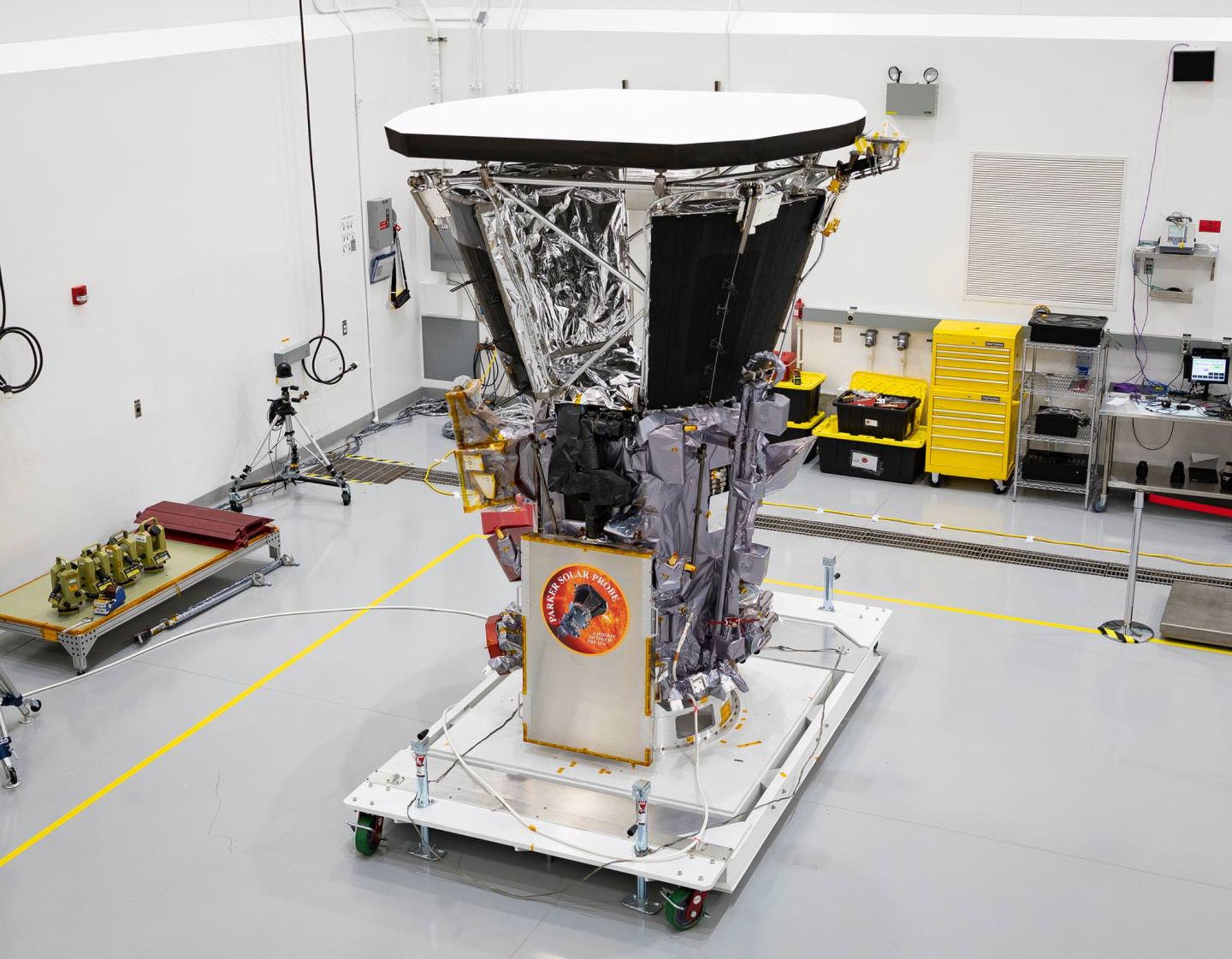
Parker solar probe in clean room. The heat shield of the spacecraft with its white ceramic coating can be seen at the top.
Why the Sun’s corona is much hotter than the Sun’s surface is one of the unsolved mysteries of the universe, and it is the task of the Parker Solar Probe to unravel it. As a result, the probe has the task of collecting information from the magnetic fields and charged particles of the solar corona and trying to answer this puzzle.
Overall, the scientific goals of the Parker probe are to determine the mechanisms that generate the fast and slow solar winds, the heating of the sun’s corona, and the transport of energetic particles. In order to achieve these goals, the probe must approach the Sun less than 10 solar radii from the center of the Sun (the radius of the Sun is 695,500 km) and spend at least 14 hours below 10 solar radii and at least 950 hours below 20 solar radii to make in situ measurements. spend Flying around the Sun, compared to other space missions whose destination is a planet, asteroid, or comet, presents unprecedented technical challenges to the spacecraft, which we will mention below.
Technical challenges of the Parker probe
Parker probe travels faster than any other spacecraft; So that in its last trip around the sun, it will fly over its surface at an incredible speed of 690,000 kilometers per hour. This speed is so high that the distance between Tehran and Kermanshah can be covered in less than three seconds. However, the first big problem facing Parker was actually getting to the sun. Although the sun’s gravity acts as an anchor for the entire solar system, it is not easy to approach.
To get a satellite out of orbit around the Earth, we need to reduce its angular momentum so that it falls towards the planet. This is what we have to do when trying to remove an object from orbit around the Sun; With the difference that in this case, we are at a distance of one astronomical unit or 150 million kilometers from the sun and we are moving at a speed of 30 kilometers per second.
Parker’s first big problem was getting to the sun
Any object that is launched from the earth will enter the path around the sun with the same orbital speed; This means that in order to achieve a shorter orbit around the sun, we must reduce the orbital speed of the spacecraft around the sun. Decelerating the spacecraft is an extremely energy-consuming operation; Especially when you add in the energy required to escape Earth’s gravity. So let’s assume that we first want to get our satellite from the surface of the earth to the orbit around the earth. This requires moving the satellite up to a speed of 9.2 km/s relative to the earth’s surface. Then, the satellite is placed in orbit around the Earth and moves around the Sun at a speed of 30 km/s.
After placing the satellite in the earth’s orbit, we have to perform an orbital maneuver called “Hohmann transfer”. By performing this maneuver, we change the spacecraft’s orbital energy to correct its perigee (closest distance to the Sun) or apogee (farthest distance from the Sun). To meet an outer planet like Mars, we need to increase the solar apogee by adding to the orbital energy of the spacecraft; While reaching an inner planet like Venus requires reducing the solar perigee by reducing the orbital energy. To reach Mars and Venus from Earth’s orbit, we need a delta way (change in velocity) of approximately 2.9 km/s and 2.5 km/s respectively. These values are obtained using the following equation:

In the equation, the Greek letter mo, similar to the English u, is called the Sun’s planetary parameter, which is the product of the Sun’s mass. R 1 is the orbital radius of the mass from which we start moving. In this case, the distance of 150 million kilometers from the Earth to the sun is considered the orbital radius, and finally, R 2 is the perigee or zenith. If we calculate the DeltaV required for the Parker Solar Probe to reach its closest distance to the Sun (6.2 million km), we will arrive at a number of 21.4 km/s, which is more than 8.5 times the DeltaV needed to reach Venus.
The obtained Delta V number is considered extremely high and exceeds the capability of all rockets built so far. But four years ago, the Parker Solar Probe launched from Cape Canaveral, Florida atop the Delta 4 Heavy, the world’s second most powerful rocket after SpaceX’s Falcon Heavy. In order to give the probe additional thrust, Delta 4 was equipped with a special solid-fuel third stage, which provided an additional three kilometers per second delta velocity for the normally two-stage rocket.
However, even with this extra power, the probe could never get close to the Sun. In order to make his record-breaking flight, which was one-seventh of the record of Helios 2, NASA’s previous solar probe, Parker was assisted by the gravity of the planet Venus in an amazing way five times, and he is going to make two more flybys of this planet in 2023 and 2024.
The path of the Parker probe. The spacecraft shortens its orbit around the Sun with each Venus flyby.
Since Venus is a relatively low-mass planet, Parker needed this number of flybys. The amount of speed a planet can change is largely determined by its gravity, which in turn is determined by the planet’s mass. As mentioned earlier, Parker’s original plan was to get a gravitational boost from Jupiter that would bring the probe three times closer to the Sun; But this path was accompanied by some problems.
Since Jupiter’s orbit is very far from the Sun, the sunlight reaching the solar panels at the peak of Parker’s orbit was reduced by 25 times, and therefore the spacecraft needed much larger panels to provide its energy. This became problematic as the spacecraft orbited Jupiter and began accelerating toward the Sun. In this situation, the panels would be destroyed by the sun’s heat and could not be folded and hidden behind the solar shield.
Other options were available. The Parker builders could have used a radioisotope thermal generator; But this would dramatically increase the cost, weight, and complexity of the spacecraft. The real strength of Parker’s new and different flight path is getting more time and data to help scientists meet the rover’s mission goal of studying the Sun.
With the original plan to fly around Jupiter, the probe had only 100 hours of time in the target region around the Sun, and could only fly past the Sun twice before reaching the end of its eight-year mission. The new shorter path means that Parker Solar Probe will take less than 150 days to complete an orbit around the Sun, allowing scientists to collect more than 900 hours of data during the probe’s 24 orbits.
The main instruments of the spacecraft
Heat Shield
The change in the program was accompanied by a change in design, abandoning the original cone-shaped heat shield and using the flat, compact, and familiar shield used in other spacecraft. This shield is made of carbon foam with a thickness of 11.4 cm; A truly amazing material that is the product of one of the most capable material innovation labs called Ultramet. Under the scanning electron microscope, this carbon foam appears to be an extremely porous material with 97% of its internal volume being empty space, thus providing amazing insulation properties for the heat shield while benefiting from the thermal stability of carbon.
Parker’s heat shield is made of carbon-carbon composite and is exposed to temperatures of approximately 1400 degrees Celsius.
The next material is carbon-carbon composite, which is made by combining graphite with an organic binder such as bitumen or epoxy resin. This compound was applied to each side of the foam before being superheated and converting the glue into a pure form of carbon, creating a carbon-carbon composite. Finally, ceramic white was used to paint the sun-facing side of the shield to reflect the heat more.
But if the temperature of the Sun’s corona is at least half a million degrees Celsius, how can the probe enter it without melting? Although the Sun’s outermost layer is incredibly hot, it has a very low density. As a comparison, think of the difference between putting your hand in the oven and a pot of boiling water. (Don’t do this at home!) Hands can withstand much higher temperatures in the oven for longer than boiling water; Because they have to face many more particles in the pot of water.
Similarly, the Sun’s corona is less dense than the visible surface of the Sun; As a result, the spacecraft encounters less hot particles. In fact, while Parker is moving in an environment with a temperature of several million degrees Celsius, the heat shield facing the sun of the spacecraft only heats up to approximately 1400 degrees Celsius.
Read More: The Voyager Twins
Solar Probe Cup (SPC)
Other parts of the spacecraft, plus some specialized sensors and solar panels, had to be designed to fit under the shield’s shadow. But there are various tools that bravely step out from under the shadow of the heat shield; Like the cup of the solar probe, which is one of several sensors on board the spacecraft. This piece is undoubtedly Parker’s most impressive piece of technology, completely outside the scope of the sun shield’s protection; As a result, designers had to be very creative in using materials.
The Parker Solar Probe cup is a Faraday cup and part of the Solar Wind Survey Instrument (SWEAP); A device that can count and measure the properties of electrons and ions radiated from the sun and actually gives the spacecraft the ability to study the solar wind and objects ejected from the sun’s crown. This device basically works by applying an electric field to the grid placed in the mouth of the cup. By changing the voltage, it is possible to select or filter the particles that are able to enter the cup, and at the same time as the charged particles hit the collector plate at the bottom of the cup, more information can be obtained about the cause of the current. In practice, the cup is a very simple device; But facing temperatures of 1,400 degrees Celsius, which is just below the melting point of pure iron, the solar probe cup required some engineering innovations.
-638c691d8615ae71282b15db?w=1920&q=80)
Solar Probe Cup (SPC).
The first challenge was to choose a material for the electric grid that would create a selective electric field at the entrance of the cup. In addition to conductivity and resistance to heat, this network must also be machinable to make a spaced network on the scale of one hundred microns. For this purpose, the makers used tungsten; The same material used here on Earth in incandescent light bulbs. Thanks to tungsten, the lamps can survive the very high temperatures required to produce light. Tungsten filaments operate at a temperature of three thousand degrees Celsius; As a result, they are very durable against extreme temperatures. However, machining tungsten in a very fine mesh is difficult.
Micron-scale machining is not possible with traditional tools. By using these tools, as soon as the necessary force is applied to shave the metal, the mesh breaks. Instead, in such cases, lasers are usually used for engraving on materials; But since tungsten is very resistant to heat, the laser will not be able to melt it to form a network. Instead, the makers used acid printing.
Next, cables were needed that could supply the main power and carry the electrical signals away from the collector plate. Copper and aluminum, two common conductors on Earth, will be transformed into a pool of molten metal at the Parker Solar Probe position; As a result, they could not be used in any way. Each conductive cable in this part of the spacecraft must be made of niobium C-103, a special alloy consisting of 89 percent niobium, 10 percent hafnium, and 1 percent titanium. This strange aerospace material has also been used in the construction of all the components of the outer cover. Normally the wires are insulated with plastic outer coverings, But obviously, this option was not possible for the Parker space probe and the engineers had to use sapphire to ensure the insulation of the niobium wires.
To accomplish what is a relatively mundane task on Earth, Parker’s builders were forced to use strange materials. Other parts of the sensors beyond the solar shield are constructed in a similar manner. Magnetic field measuring instruments hidden behind the shield require antennas that extend beyond the solar shield to make measurements of the Sun’s magnetic field. These four antennas are also made of Niobium C-103.
Solar Panels
Solar panels were the next challenge. While orbiting the sun in its distant orbit, the spacecraft can fully open its solar panels without any problems; But as the probe begins its rapid return to the Sun, heat will become an increasing problem. By collecting solar panels, this problem can be partially dealt with; But the spacecraft must maintain some power to launch its scientific equipment during this important phase of the flight.
Parker has two smaller secondary panels that face the sun and are water cooled. This water is inside the solar panels and black radiators that are like titanium trusses right under the solar shield. It is pumped. This truss is very light despite its large size. The whole truss weighs only 22.7 kg, which considering the size of the structure, is very low weight even for titanium as a metal with low density. By performing detailed stress calculations, NASA engineers have ensured that the truss can use as little material as possible. This, of course, saves the launch weight; But the materials available to transfer heat from the heat shield to the bus (main body) of the spacecraft have also been minimized.
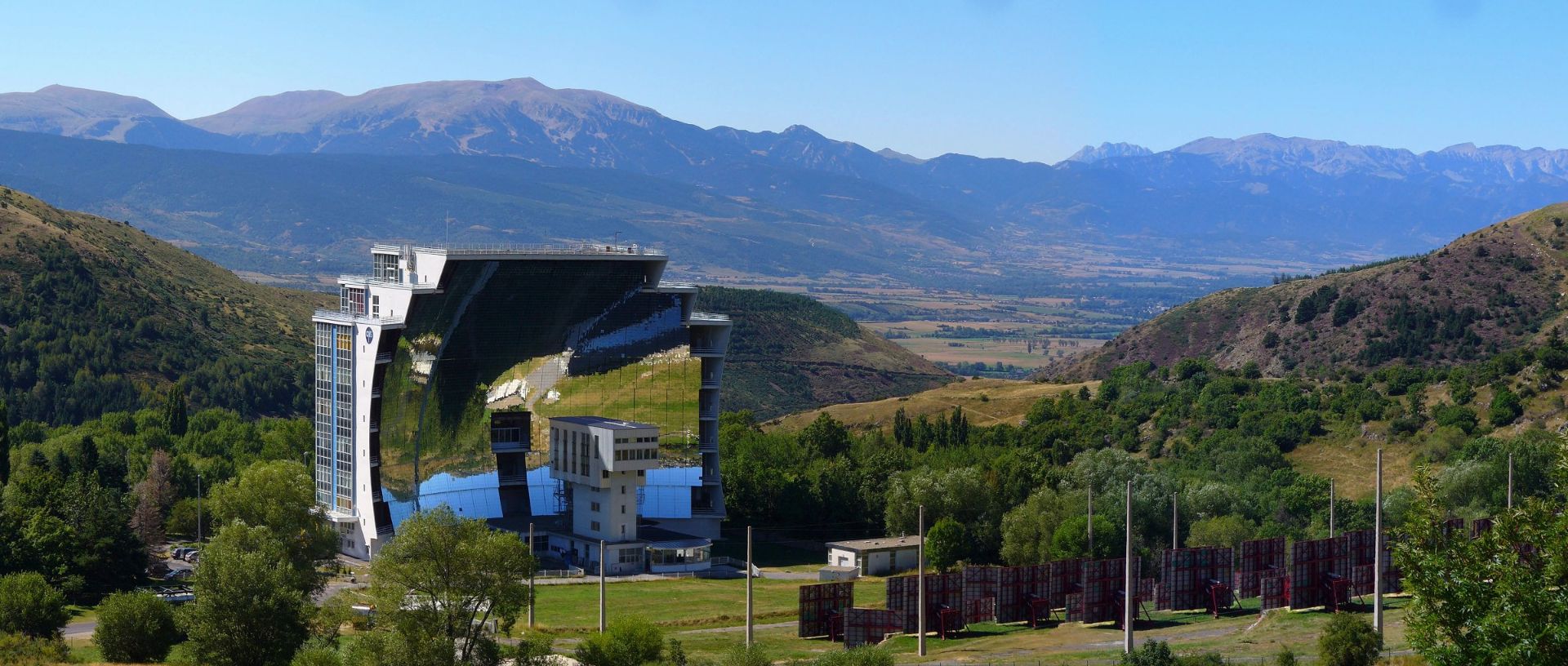
Edilo solar furnace in France.
It is difficult to test systems on the ground in the heat they are expected to encounter. The Edilo Solar Furnace is the most similar location to the environment that the Parker Probe systems will have to endure. Built on a mountainside in southern France, the facility uses ten thousand adjustable mirrors to focus light onto a concave mirror. Edilo solar furnace has the ability to reach a temperature of 3500 degrees Celsius; More than twice the temperature that Parker’s solar shield will experience.
Parts such as the Faraday cup and the solar shield were placed at the focal point of the concave mirror of the furnace and exposed to the temperatures that they must withstand when exposed to the sun. However, a piece like Faraday’s cup had to be tested while performing its sensory functions. To that end, the engineers needed a particle accelerator to simulate the electrons and ions from the solar wind that the cup would encounter. It was not possible to combine the particle accelerator with the solar furnace; As a result, researchers from the University of Michigan proposed the smart idea of using four high-power IMAX projectors to simulate the sun’s heat. They also found that the Faraday cup actually performed better when heated; Because heat cleans the system from pollutants.
Much of the information obtained from the Faraday Cup is of little interest to the casual space enthusiast. They are the raw data that provide scientists with valuable clues about the nature of the Sun. However, one of the sensors on the spacecraft, which is in charge of transmitting images to the ground, can surprise us.
Wide Field Camera for Solar Probe (WISPR)
During a solar eclipse, we can observe a beautiful phenomenon: bright rings of light that appear around the sun. These extraordinary patterns are the result of bright electrons that move around the Sun on magnetic field lines and have been deformed by the pressure of the solar wind. We have been able to observe streams of energetic electrons from our Earth and solar observatories located at Lagrangian point 1, But we never managed to see them up close until recently.
After completing its final orbit and completing its mission, Parker will evaporate into the Sun’s atmosphere
As the Parker Solar Probe entered the corona on its ninth encounter with the Sun, it began capturing images of the surrounding space with its Wide Field Imager (WISPR), an array of optical telescopes. The images sent back to Earth are like a traveler’s view of a blizzard passing through on a dark night: glowing sub-particles streaming past as the probe plunges into the eye of the storm. These beautiful images will undoubtedly provide scientists with unique data about the nature of the sub-particles flowing in the Sun’s corona.
The path ahead of the Parker probe
The next close encounter of the Parker Solar Probe will take place on June 11, 1401, and the spacecraft will circle the Sun another 15 times for a total of 24 times in the next three years. With two more flybys of Venus in 2024 and 2025, Parker will break his records and get much closer to the Sun. On the last visit, the probe will reach a distance of 16.6 million kilometers from the Sun, which is almost seven times closer than any other spacecraft.
After completing the 24th orbit, the probe may have some fuel to continue orbiting the Sun; But Parker ultimately fails to ignite the thrusters necessary to keep his heat shield facing the Sun. The probe will then begin to rotate, and parts of the spacecraft not designed to see the sun will be exposed to full radiation.
The spacecraft will first break into large pieces and then become smaller and smaller. In the end, the entire probe, which is about the size of a small car, will be left with nothing more than tiny dust scattered across the Sun’s corona. However, Parker’s legacy will live on. The probe’s observations are expected to finally help solve questions that have been puzzling scientists for decades.


You may like
-




Why there is no gaseous moon in solar system?
-




The strangest things that can happen to humans in space
-




Artificial intelligence could explain why we haven’t seen extraterrestrials yet
-




Can humans endure the psychological torment of living on Mars?
-




Black holes may be the source of mysterious dark energy
-




Scientists’ understanding of dark energy may be completely wrong


Why there is no gaseous moon in solar system?
In the solar system, we have rocky moons (such as Earth’s moon ), oceanic moons (such as Europa and Enceladus ), and frozen icy moons (such as Triton), but there are no gaseous moons. Is it because of bad luck that we don’t have gas moons or is there a physical reason for their absence?
Indeed, gaseous moons exist! Although they are not in the solar system. Although more than 5,500 extrasolar planets have been discovered so far, only two possible extrasolar moons have been identified and the existence of none of them has been definitively confirmed yet. The strange thing about these two exosolar moons is that they are gas giants orbiting larger gas giants. Of course, as we shall see, they are the exceptions that prove the rule.
To understand why gas moons do not exist, at least in the solar system, it is better to learn how gas giant planets form.
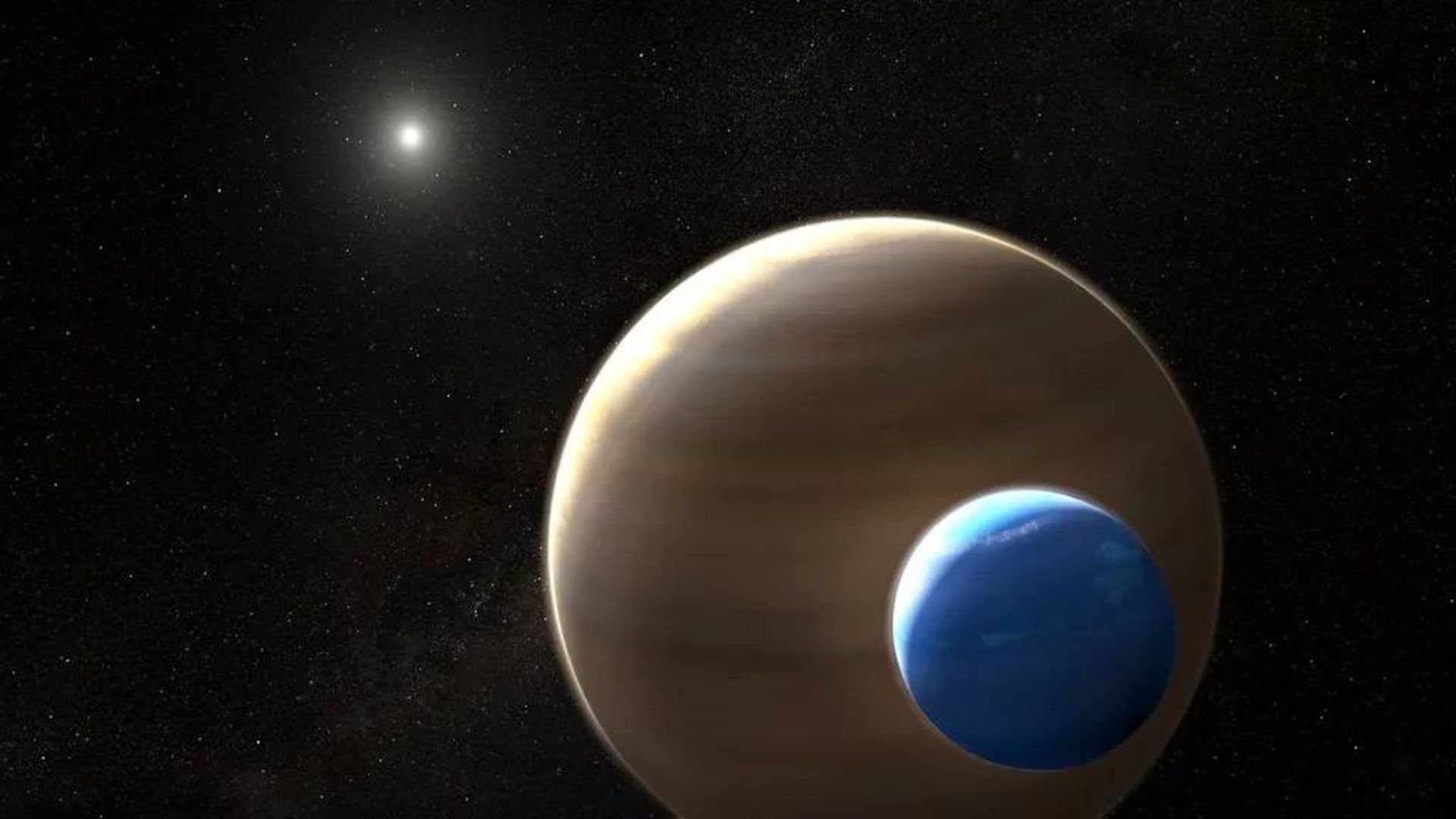 Artist’s impression of Kepler 1625b-i, the possible moon of the exoplanet Kepler 1625b and the star of the system.
Artist’s impression of Kepler 1625b-i, the possible moon of the exoplanet Kepler 1625b and the star of the system.
There are two scenarios for the formation of a gas giant planet: the bottom-up scenario and the top-down scenario.
The formation of gaseous worlds according to the bottom-up scenario
The bottom-up, or “core accretion” scenario, explains how the gas giant planets of the Solar System formed.
If we could go back 4.5 billion years, we would see a young Sun surrounded by a disk of gas and dust. All planets are formed from this protoplanetary disk. They first formed as rocky bodies and grew larger by collecting dust, pebbles, and surrounding asteroids. Some of them only grew to the size of Mars or Venus, but others continued to grow and became giant rocky bodies with about 10 times the mass of Earth.
When planets grow to such large sizes, their gravity is strong enough to pull huge amounts of gas from the protoplanetary disk. How much gas they stole and how big they grew depended on their gravity and the amount of gas available. But in the end, our solar system was left with four gas-giant planets, Jupiter and Saturn, and the ice giants Uranus and Neptune.
NASA’s Juno mission to Jupiter has detected gravity from a large, rocky, yet diffuse core about ten times the mass of Earth at the center of Jupiter, helping to find evidence for the core accretion model.
 The planets of the solar system were formed during the bottom-up process or core accretion in the protoplanetary disk.
The planets of the solar system were formed during the bottom-up process or core accretion in the protoplanetary disk.
The formation of gaseous worlds according to the top-down scenario
In the bottom-up model, gaseous worlds, just like stars, form directly from the disintegrating mass of gas in the nebula. However, there is a minimum amount of mass that can produce this process.
When a large mass of gas contracts under its own gravity, it heats up because the gas is compressed into a smaller and therefore denser volume. But when the gas is hot, it tends to expand, so to maintain the contraction, the mass of gas must remove excess heat. As a result, we often see the collapse of gas clouds that glow as thermal infrared energy.
The radiation of enough heat so that the gas can cool and still decay depends on the dust’s opacity, temperature, and density, and the process becomes more inefficient in smaller objects; So, at a mass about three times that of Jupiter, it cannot generate enough heat to continue disintegrating. The smaller the volume, the cloudier and denser the dust becomes, and the process of radiating the excess heat due to gravitational contraction becomes increasingly inefficient. Therefore, an object smaller than three times the mass of Jupiter cannot form during the top-down process.
Why does the solar system not have a gaseous moon?
Most of the moons of our solar system, like their parent planets, were formed by the process of core accretion from the bottom up in disks of residual material that surrounded their parent planets. Since the planets had already collected most of the available material, there was not enough material left to form a moon with enough mass to have enough gravity to hold a large amount of gas. In fact, only one moon in the solar system even has an atmosphere, and that is Saturn’s largest moon, Titan. Similarly, the top-down process could not occur because there was not enough gas left.
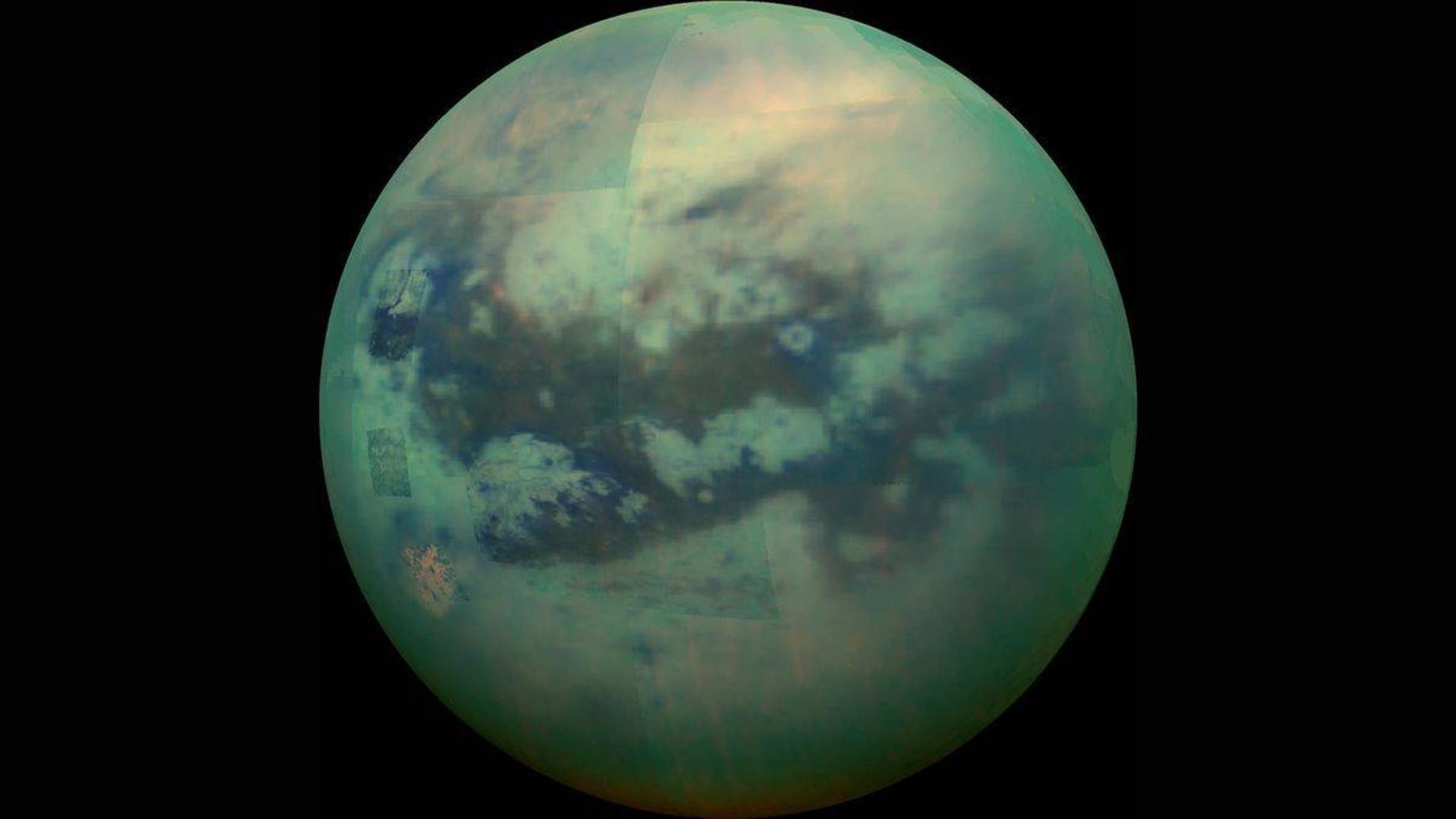 Titan, Saturn’s moon, is the only moon in the solar system that has an atmosphere.
Titan, Saturn’s moon, is the only moon in the solar system that has an atmosphere.
Strange moons
According to the explanations given, in the solar system, gaseous moons cannot be formed through the two conventional processes of producing gaseous universes. However, there are wonders in our cosmic neighborhood that are formed in a different way.
In the case of Earth, the Moon is likely formed from material blasted from Earth following a massive collision with a Mars-sized protoplanet. These remnants formed a ring that created the moon’s core through accretion. But could the impact of a gas giant planet eject enough gas to form a gas moon?
Unfortunately no. Rocky planets can experience such collisions, but remember when Comet Shoemaker-Levy 9 hit Jupiter in 1994 and disappeared, Jesse Christiansen of the California Institute of Technology told Space.com. Gas giants devour everything. Anything that hits a gas giant just becomes part of the gas giant instead of throwing debris into space.
Another strange case is the trapped moons. For example, the moons of Mars, Phobos, and Deimos, are trapped by the red planet’s gravity. Saturn’s outermost moon Phoebe is a captured comet mass, and Neptune’s moon Triton is a Kuiper Belt mass that was trapped by Neptune’s gravity millions of years ago. They did not form around the planet, but formed on their own in space and then drifted until they were finally trapped by a planet’s gravity.
Now, the question arises, can a smaller gas planet be captured by a larger gas planet? After all, gaseous worlds can reach up to 12 times the size of Jupiter, so in principle, they could trap a gaseous world the size of Neptune.
Gaseous extrasolar moons
It seems possible for smaller gaseous bodies to be captured by larger gaseous planets. “It’s possible that there are (gas) moons around the size of Neptune around giant exoplanets,” Christiansen said.
The two possible exomoons mentioned at the beginning of the article (Kepler 1625b-i and 1708b-i) are both gas giants in their own right but appear to be originally moons of larger gas giants. “Both of these are candidates,” Christiansen says. “We see something in the data that is consistent with the moon, but other phenomena could also explain it.”
Assuming that Kepler 1625b-i is a real moon, it has a mass 19 times that of Earth (about 6% of the mass of Jupiter), is similar in mass to Neptune, and accompanies a gas planet with a mass 30 times the mass of Earth and a diameter equal to half that of Jupiter. Kepler 1708b-i is probably less massive than Kepler 1625b-i, has a diameter about five times that of Earth (about half the diameter of Kepler 1625b-i), and orbits a gas planet 4.6 times the size of Jupiter.
 Artist’s impression of an exomoon orbiting the exoplanet Kepler 1708b.
Artist’s impression of an exomoon orbiting the exoplanet Kepler 1708b.
“They challenge a lot of theories,” says Christiansen. “It’s hard to find a way for moons to form, so they must be trapped.” Being trapped makes them virtually like captured moons in the solar system. Like planets, they form from accretion cores in the disk and are then captured as they migrate towards their star.
Migration appears to be a common process in young planetary systems. Migration is the astronomers’ explanation for objects known as “hot Jupiters,” which are gas giants very close to their star but may have originally formed further away.
The extrasolar moons Kepler 1625b-i and Kepler 1708b-i were captured by larger planets as they migrated in front of them. However, they are probably not true moons, but rather examples of binary planets rather than extrasolar moons.
A binary planet exists when both worlds orbit the center of mass between them, rather than one orbiting the other. In our solar system, we have a double planet in the form of Pluto and its largest companion, Charon.
So, gas moons exist somehow, but nature has to cheat to make them!


The strangest things that can happen to humans in space
When it comes to space and astronautics, we all remember very interesting movies in which strange things happen to astronauts. Movies with exciting stories, most of which are nothing but the authors’ imaginations; But there are other very amazing stories happening in space that are completely real and have nothing to do with human imagination. In this article, we try to discuss some examples of these events and introduce you to the wonders of space travel.
Strange things that happen to humans in space
The human heart changes shape in space
It may seem a bit strange and even unbelievable that traveling to space can change the shape of the heart, But such a thing happens in reality and scientific studies have proven it. Less work of the heart and less pumping of blood leads to a decrease in the volume of the muscles of this organ, and this ultimately causes the hearts of astronauts to become more spherical by about 9.4%.
Despite the temporary nature of these conditions, some doctors believe that the reduction in the volume of the human heart during space travel may have serious consequences. According to NASA, researchers are researching this issue, and the results of this study will not only help astronauts but will also affect ordinary people and the inhabitants of the planet.
There is a possibility of mental problems in space
Living in the extraterrestrial atmosphere is associated with many problems. Changing living conditions and experiencing a completely different environment with very specific conditions imposes many psychological pressures on astronauts. These issues cause astronauts to experience special psychological conditions and are susceptible to various problems such as anxiety and depression.
Being away from family, lack of simple facilities such as sunlight or even fresh food, and heavy work are among the reasons that expose astronauts to various mental illnesses.
Human vision decreases in space
Visual impairment caused by intracranial pressure or VIIP is another space travel wonder faced by astronauts. This problem was observed for the first time in 2005 and in an astronaut named John Phillips. The Washington Post investigates this issue in an article and states that Phillips experienced a significant loss of vision after returning from his space trip. This incident prepared the groundwork for the researchers’ research for further investigations.
Additional research showed the changes in the appearance of the astronauts’ eyes and the loss of their vision after returning from space travel. Currently, the only possible reason that has been proposed for the occurrence of such conditions is the lack of gravity and the creating double pressure on the astronauts’ skulls; Of course, the research in this field continues and it is still not possible to say with certainty a specific reason for the occurrence of these conditions.
The body’s immune system weakens in space
Traveling to space, along with its excitement and surprises, also brings many problems for humans. One of these problems is the weakening of the body’s immune system in space, which was first discovered by astronauts during the Apollo mission. The story was that the astronauts in this mission experienced problems such as irregular heartbeat, dehydration, and inner ear disorder, and faced many problems after returning from the mission.
Studies conducted in this field have shown that after leaving the Earth’s atmosphere, the immune system of astronauts weakens, in part due to the abnormal activation of a type of immune cells called T-regulatory lymphocytes. This weakening is sometimes so severe that it causes astronauts to deal with latent viruses such as chicken pox in addition to simple infectious diseases such as colds after returning from space travel.
Astronauts can lose their fingernails
As you know, astronauts wear special clothes to carry out their missions in space, which includes astronaut gloves. These gloves are designed in such a way that they put a lot of pressure on the astronauts’ hands and nails; This will eventually lead to their nails falling off.
It is true that the fall of fingernails or their swelling is not a simple matter that can be easily passed over, But it seems that doing more research to design more suitable gloves can minimize the possibility of this problem and astronauts will not face such a problem in the future.
Human height grows taller in space
Another wonder of space travel, which makes it one of the favorite trips of ordinary people, is the increase in height that occurs during this trip. As soon as you leave the Earth’s atmosphere, the gravity is close to zero, and this causes the pressure on the spine to decrease significantly. The reduction of this pressure, in turn, causes the height of the astronauts to grow a few centimeters.
One of the studies that confirms the truth of this issue is the research that NASA scientists conducted on two twin brothers. In this study, one of the twins had a 342-day trip to space and the other brother was examined on Earth. The results of this and other research determined that the height of astronauts increases by 2 to 5 cm on average after space travel.
 Mark Kelly (left) and Scott Kelly (right) made it possible for researchers to study the health effects of long-duration space travel by studying NASA twins.
Mark Kelly (left) and Scott Kelly (right) made it possible for researchers to study the health effects of long-duration space travel by studying NASA twins.
Traveling to space leads to weakening of muscles
Another strange thing that happens to astronauts in space and affects their health is the weakening of muscles or atrophy. Long space travel causes muscle wasting in astronauts, so they are trained to exercise continuously during their journey.
NASA is working on this issue to find solutions to prevent the problem of muscle wasting. The reason for the importance of this issue is the need for astronauts to have strong muscles and a healthy body so that they can perform their difficult missions in space in the best possible way.
Space swells astronauts’ faces
A large volume of our body is made up of liquid. On Earth, gravity pulls this fluid down and collects some of it in the lower limbs; But in space, where microgravity prevails, our body fluids are more evenly distributed; As a result, astronauts’ faces look puffier than normal, and on the other hand, their legs appear thinner than when they are on Earth.
According to the Washington Post, “the phenomenon of puffy-faced bird’s legs” appears when blood and other body fluids accumulate on the side of the upper body due to low gravity and stay there; As a result, the heads swell and the legs shrink. In this situation, the appearance of the astronauts can change by swelling their faces. Astronauts may experience excessive blood pooling; As if their head is constantly cold. However, after a few weeks in space, your body will adjust to the change in gravity and some of the facial puff will fall asleep.
Space travel may increase the risk of cancer
Astronauts who spend 6 months in space are exposed to almost as much radiation as a thousand chest X-rays. Exposure to different types of radiation exposes the body to the risk of cancer, damage to the central nervous system, bone loss, and some cardiovascular diseases. However, it has been difficult to accurately calculate the level of risk so far. Also, scientists’ information about the impact of radiation in long-duration space missions to deep space destinations such as the Moon and Mars is still limited.
The more time a person spends in space, the more radiation they are exposed to and, theoretically, the more DNA damage they accumulate. It is not possible to say with certainty whether this DNA damage actually increases the risk of cancer; Because cancer is affected by many environmental and genetic factors. For example, it’s probably fair to say that today’s astronauts are probably some of the fittest people on the planet. They probably eat a healthy diet, exercise a lot, and don’t smoke or drink much alcohol. All these things reduce the possibility of getting cancer.
Strange events for astronauts during space travel have always been one of the most fascinating topics for ordinary people. The wonders of space travel are not limited to the things we have mentioned, and at the same time as science advances and the scope of research increases, we will definitely see more interesting news in this field in the near future.
Space
Artificial intelligence could explain why we haven’t seen extraterrestrials yet
Published
3 days agoon
26/04/2024

Artificial intelligence could explain why we haven’t seen extraterrestrials yet
Artificial intelligence shows us its presence in thousands of different ways. This technology has capabilities such as accessing huge data sources, detecting financial frauds, driving cars and even suggesting music. On the other hand, artificial intelligence chatbots have amazing performance; But all this is just the beginning.
Can we figure out how fast artificial intelligence is developing? If the answer is no, does it include the notion of a large filter? Fermi’s paradox refers to the difference between the high probability of the existence of advanced civilizations and the absence of evidence of their presence. Many solutions have been proposed as to why this discrepancy exists. One of these hypotheses is the “big filter”.
The Great Filter is a hypothetical event or situation that prevented intelligent life from becoming an interplanetary or interstellar entity and could even lead to its destruction. Such events can include climate change, nuclear war, asteroid collisions, supernova explosions, plague, or even other catastrophic events; But what about the rapid growth of artificial intelligence?
A new study in the journal Acta Astronautica shows that artificial intelligence is becoming artificial superintelligence (ASI), which could be one of the great filters. The title of this article is as follows: “Is artificial intelligence a great filter that makes advanced civilizations rare in the world?” The author of this article is Michael Garrett from the Faculty of Physics and Astronomy at the University of Manchester.
 Artificial intelligence as a big filter can prevent biological species from accessing interplanetary and interstellar spaces.
Artificial intelligence as a big filter can prevent biological species from accessing interplanetary and interstellar spaces.
Some people believe that the Great Filter will prevent a technological species like us from becoming a multi-planetary species. This is bad news because species with only one home are at risk of extinction or stagnation. According to Garrett, species without a backup planet are in a race against time. he writes:
Such a filter appears before civilizations reach multiplanetary stability and presence, suggesting that the typical lifespan of an advanced civilization is less than 200 years.
If the above hypothesis is true, it can be proved why we have not found any traces of technology or other evidence of extraterrestrial intelligence; But what does this hypothesis say about the path of human technology? If we face a limit of 200 years and this limit is due to ASI, what will be our fate?
Garrett also emphasizes the need to create legal frameworks for the development of artificial intelligence on Earth and the development of a multi-planetary society to deal with existing threats.
Artificial superintelligence (ASI) can completely replace the human race
Many scientists and thinkers say that we are on the threshold of a huge transformation. Artificial intelligence is revolutionizing how things are done; Much of this transformation takes place behind the scenes. AI looks set to eliminate millions of jobs, and when combined with robotics, there are no boundaries. Certainly, these developments will be an obvious concern.
However, there are more systemic and deeper concerns. Who writes the algorithms? Will artificial intelligence be able to recognize to some extent? It can be said with almost certainty that this will be possible. Do competitive algorithms destroy strong democratic societies? Will open communities continue to stagnate? Will ASI decide for us and if so who will be held accountable?
The above questions are increasing without any clear end. Stephen Hawking always warned that if artificial intelligence evolves independently, it can destroy the human race. In 2017, he said in a conversation with Wired magazine:
I am afraid that artificial intelligence will completely replace humans. If people can design computer viruses now, perhaps in the future someone will be able to design an artificial intelligence that improves and reproduces itself. This type of intelligence will be a new form of life that can surpass humans.
 The combination of artificial intelligence and robotics can become a threat to humans.
The combination of artificial intelligence and robotics can become a threat to humans.
Hawking may be considered one of the most significant figures of warning about artificial intelligence, But he is not alone. The media is full of discussions and warnings as well as articles about the capabilities of artificial intelligence. The most important caveat is that ASI can become rogue. Some people consider this hypothesis to be science fiction, but Garrett doesn’t think so. According to his writing:
Concerns about artificial super-intelligence (ASI) and its going rogue in the future are a major issue. Combating this possibility will become a growing field of research for AI leaders in the coming years.
If AI had no advantage, the problem would be simpler; But the technology offers a variety of benefits, from improved medical imaging and diagnostics to safer transportation systems. The trick for governments is to allow benefits to grow while controlling harm. According to Garrett, this issue is especially important in the fields of defense and national security, where moral development and responsibility are important.
The problem is that we and our governments are not sufficiently prepared. There has never been such a thing as artificial intelligence, and no matter how hard we try to conceptualize and understand its path, we will not reach the expected result. Therefore, if we are in such a situation, probably other biological organisms in other parts of the world have the same conditions. The emergence of artificial intelligence and artificial superintelligence could be a cosmic issue, making it a good candidate for the big filter. The danger that ASI can pose is that it may one day no longer need the biological life that created it.
According to Garrett’s explanation, ASI systems, by reaching the technological singularity, can overtake biological intelligence and evolve at a rate that even outpaces their own monitoring mechanisms and ultimately lead to unexpected and unintended consequences that are unlikely to be compatible with biological ethics and interests. to be
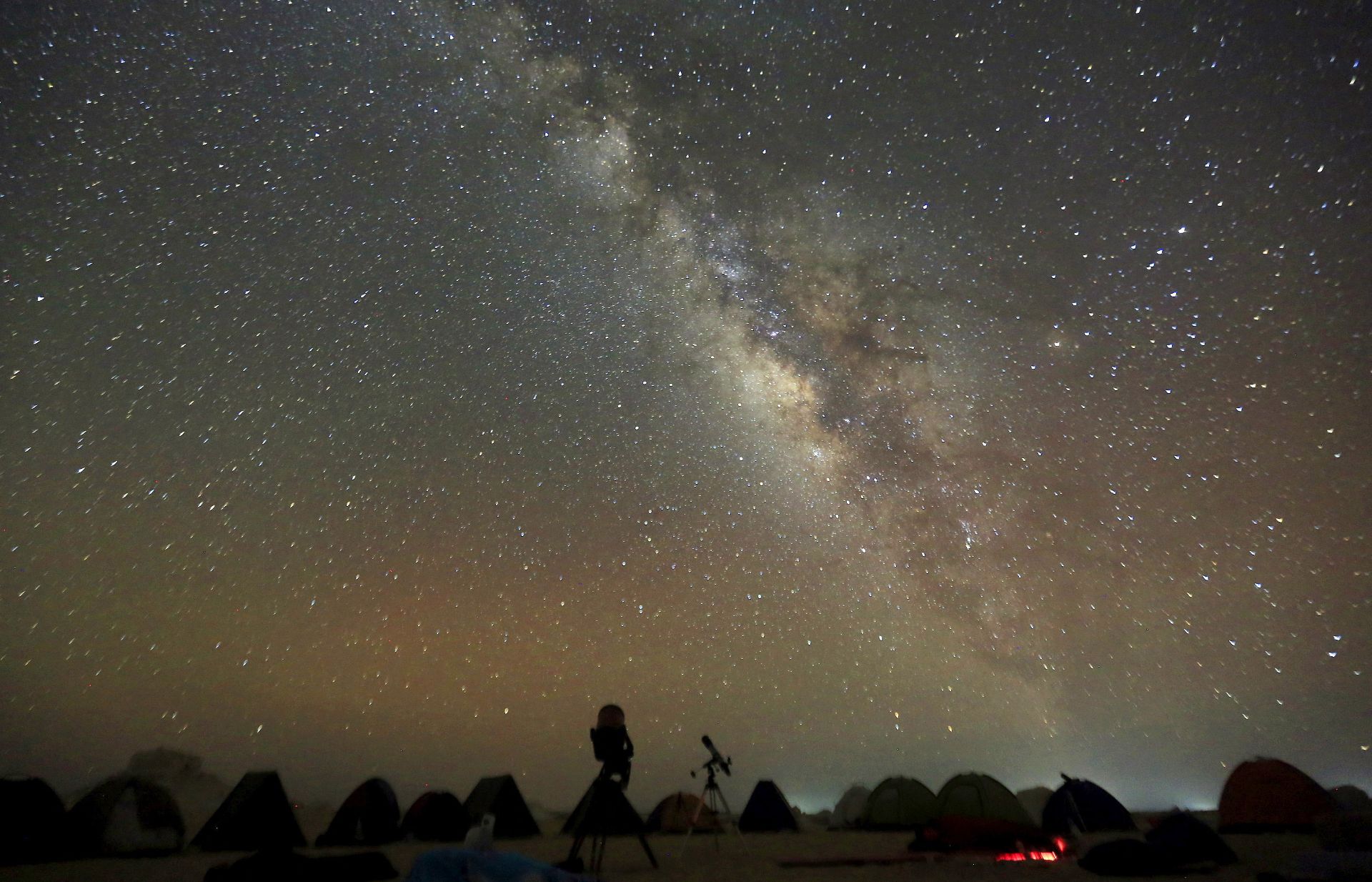 Life on multiple planets could diminish the threat of artificial intelligence.
Life on multiple planets could diminish the threat of artificial intelligence.
How can ASI free itself from the pesky biological life that has captured it? may engineer a deadly virus; or prevent the production and distribution of agricultural products or even lead to the collapse of the nuclear power plant and start a war.
It is not yet possible to speak definitively about the possibilities, as the realm of artificial intelligence is uncertain. Hundreds of years ago, cartographers were drawing monsters in unexplored regions of the world, and now that’s what we’re doing. Garrett’s analysis is based on the assumption that ASI and humans occupy the same space; But if we can reach a multiplanetary state, this scenario will change. Garrett writes:
For example, multiplanetary biological species can draw on the independent experiences of different planets and avoid the single-point failure imposed by a single-planetary civilization by increasing the diversity of survival strategies.
If we can spread the risk over multiple planets around multiple stars, we can protect ourselves from the worst possible consequences of ASI. This distributed model increases the resilience of biological civilizations against artificial intelligence disasters by creating redundancy. If one of the planets or bases occupied by future humans fails to survive the ASI technological singularity, the others may survive and learn from the failure.
A multi-planetary situation could also be beyond the ASI’s rescue. Based on Garrett’s hypothetical scenarios, we can try more experiences with AI while keeping it limited. Consider an AI on an isolated asteroid or dwarf planet that doesn’t have access to the resources it needs to escape and can thus be limited. By Garrett:
This scenario applies to isolated environments where the effects of advanced artificial intelligence can be explored without the immediate risk of global annihilation.
However, a complex issue arises here. Artificial intelligence is advancing at an ever-increasing rate, while human efforts to become a multi-planetary species are at a slow pace. According to Garrett, the incompatibility between the rapid development of artificial intelligence and the slow development of space technology is very clear.
The speed of artificial intelligence is much faster than space travel
The difference here is that artificial intelligence is computational and informational, but space travel faces many physical obstacles that we still don’t know how to overcome. Human biological nature is an obstacle to space travel, but none of these obstacles limit artificial intelligence.
While artificial intelligence could theoretically improve its capabilities even without physical limitations, space travel faces limitations in energy, materials science, and the harsh realities of the space environment, Garrett writes.
Currently, artificial intelligence operates under the limitations set by humans; But this may not always be the case. We still don’t know when AI might turn into ASI, But we cannot ignore this possibility. This issue can lead to two intertwined conclusions.
If Garrett is right, humans should try harder for space travel. It may seem far-fetched, but knowledgeable people know that Earth will not be habitable forever. If man does not expand his civilization into space, he may be destroyed by his own hand or by the hand of nature. However, reaching the moon and Mars can promise future steps.
The second conclusion is related to the legalization and supervision of artificial intelligence; A difficult task in a world where mental illness can take control of entire nations and lead to an increase in wars. Although industry stakeholders, policymakers, independent experts, and their governments are warning about the need for legislation, creating a universally accepted legal framework is difficult, writes Garrett.
In fact, humanity’s perpetual disparity makes the goal of controlling artificial intelligence uncontrollable. Regardless of how fast we develop strategies, AI can grow even faster. In fact, without applicable law, there is a reason to believe that artificial intelligence is not only a threat to future civilization but a threat to the entire advanced civilizations.
The continuation of intelligent and conscious life in the world may depend on the effective and timely implementation of legal regulations and technological efforts.


Why there is no gaseous moon in solar system?


The strangest things that can happen to humans in space


Motorola Edge 50 Ultra review


Artificial intelligence could explain why we haven’t seen extraterrestrials yet


Samsung Galaxy A55 vs Galaxy A35


Review of Motorola Edge 40 ; Pure Android in a lovely body


The secret of the cleanest air on earth has been discovered


Asus Zenbook 14 OLED laptop review


Motorola Edge 50 Pro


How extinct animals could be brought back from death?
Popular
-



 Technology9 months ago
Technology9 months agoWho has checked our Whatsapp profile viewed my Whatsapp August 2023
-



 Technology10 months ago
Technology10 months agoHow to use ChatGPT on Android and iOS
-



 Technology9 months ago
Technology9 months agoSecond WhatsApp , how to install and download dual WhatsApp August 2023
-



 Technology11 months ago
Technology11 months agoThe best Android tablets 2023, buying guide
-



 Humans1 year ago
Humans1 year agoCell Rover analyzes the inside of cells without destroying them
-



 AI1 year ago
AI1 year agoUber replaces human drivers with robots
-



 Technology10 months ago
Technology10 months agoThe best photography cameras 2023, buying guide and price
-



 Technology11 months ago
Technology11 months agoHow to prevent automatic download of applications on Samsung phones
